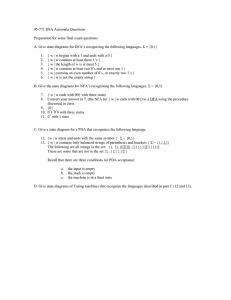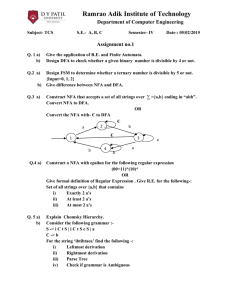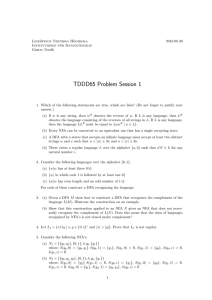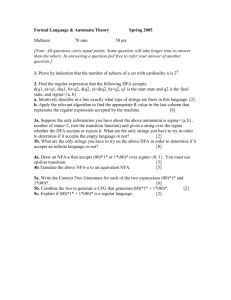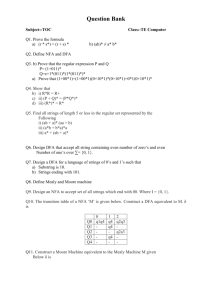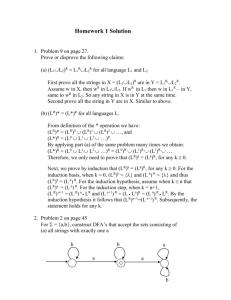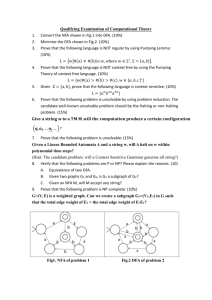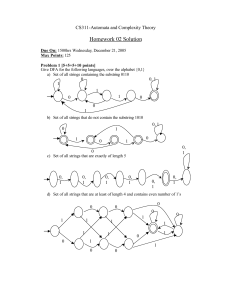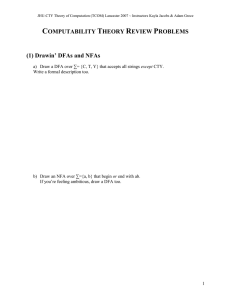FLAT ASSIGNMENT
advertisement
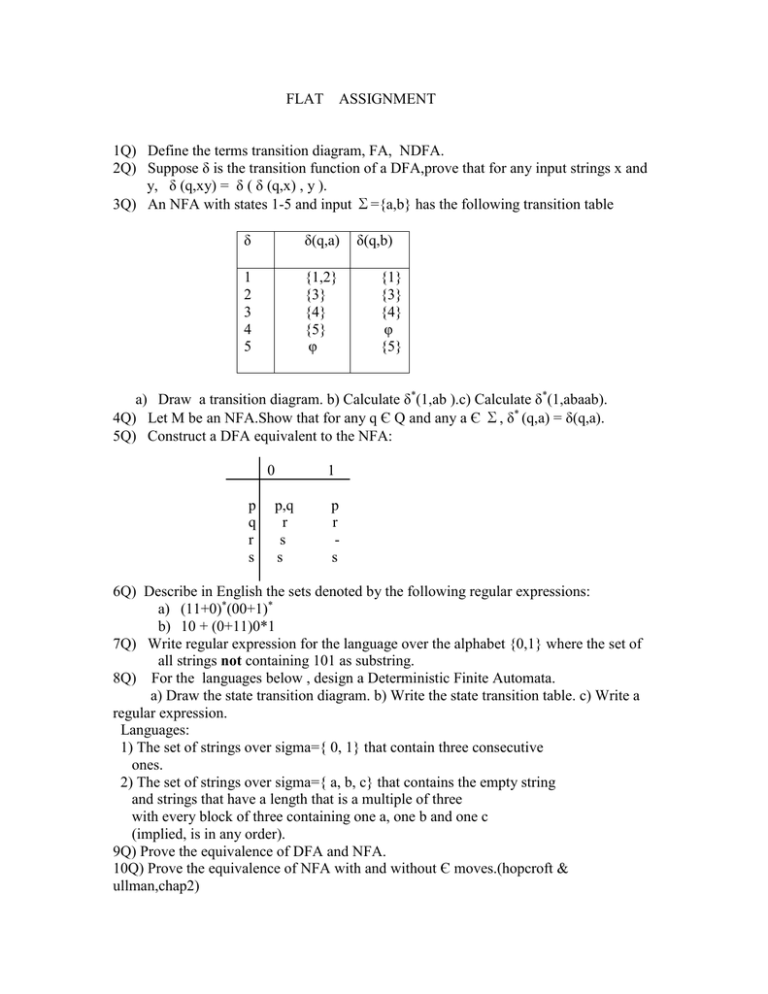
FLAT
ASSIGNMENT
1Q) Define the terms transition diagram, FA, NDFA.
2Q) Suppose δ is the transition function of a DFA,prove that for any input strings x and
y, δ (q,xy) = δ ( δ (q,x) , y ).
3Q) An NFA with states 1-5 and input ∑={a,b} has the following transition table
δ
δ(q,a)
1
2
3
4
5
{1,2}
{3}
{4}
{5}
φ
δ(q,b)
{1}
{3}
{4}
φ
{5}
a) Draw a transition diagram. b) Calculate δ*(1,ab ).c) Calculate δ*(1,abaab).
4Q) Let M be an NFA.Show that for any q Є Q and any a Є ∑, δ* (q,a) = δ(q,a).
5Q) Construct a DFA equivalent to the NFA:
0
p
q
r
s
1
p,q
r
s
s
p
r
s
6Q) Describe in English the sets denoted by the following regular expressions:
a) (11+0)*(00+1)*
b) 10 + (0+11)0*1
7Q) Write regular expression for the language over the alphabet {0,1} where the set of
all strings not containing 101 as substring.
8Q) For the languages below , design a Deterministic Finite Automata.
a) Draw the state transition diagram. b) Write the state transition table. c) Write a
regular expression.
Languages:
1) The set of strings over sigma={ 0, 1} that contain three consecutive
ones.
2) The set of strings over sigma={ a, b, c} that contains the empty string
and strings that have a length that is a multiple of three
with every block of three containing one a, one b and one c
(implied, is in any order).
9Q) Prove the equivalence of DFA and NFA.
10Q) Prove the equivalence of NFA with and without Є moves.(hopcroft &
ullman,chap2)
11Q ) Convert NFA with Є moves to a DFA. (Answer the "?")
| 0 | 1 | Є
F = { q3 }
---------------------------------------q0 | {q0}| φ | {q1}
q1 |{q2} | φ | {q3}
q2 | φ | {q1}| φ
q3 | {q3}| φ | φ
M = (Q, sigma, delta, q0, F)
Q={?}
F={?}
q0 = ?
sigma = { ? }
delta
12Q) Convert the regular expression to a NFA-with Є moves and DFA
1(0+1)* 0 .


